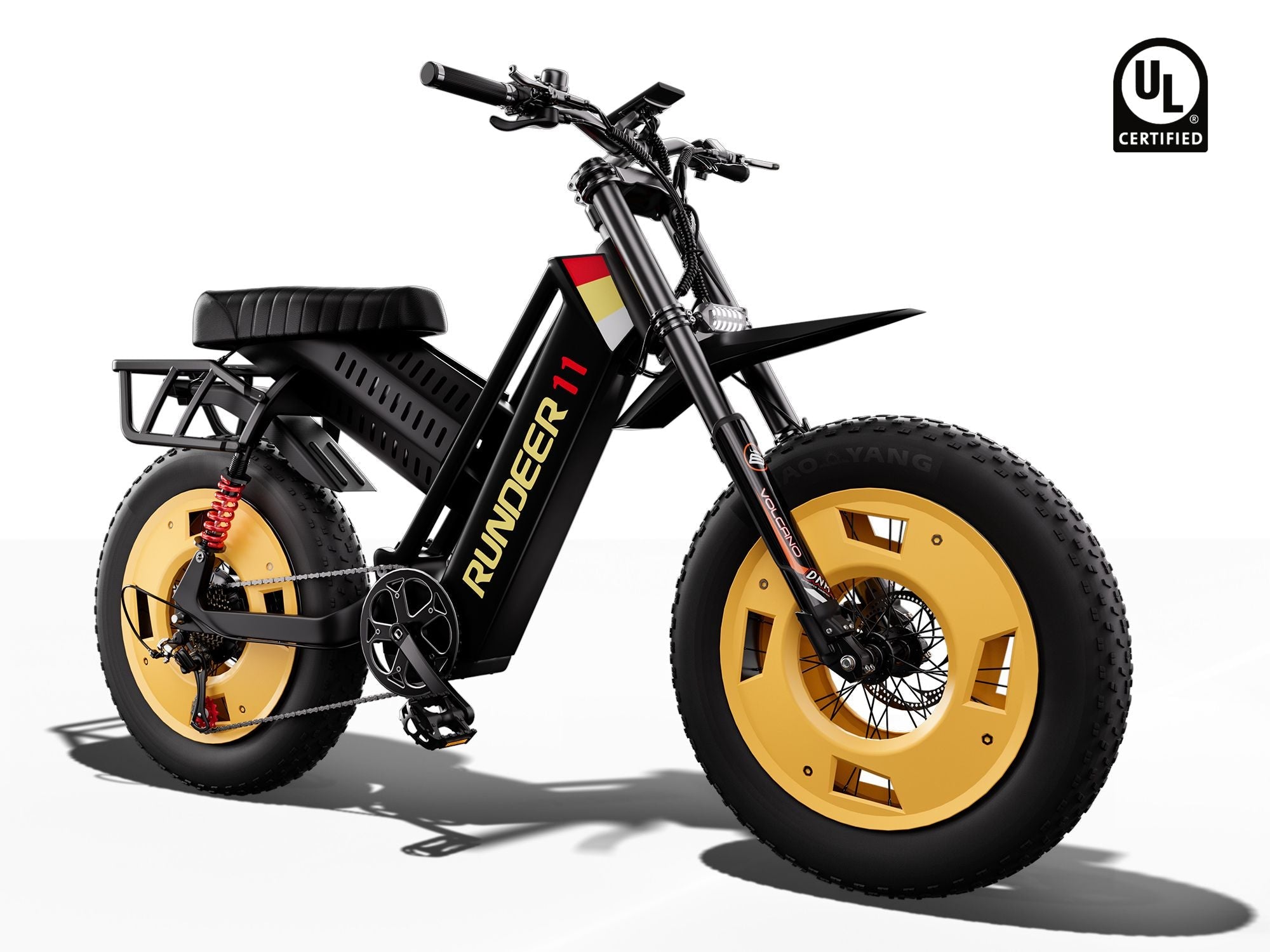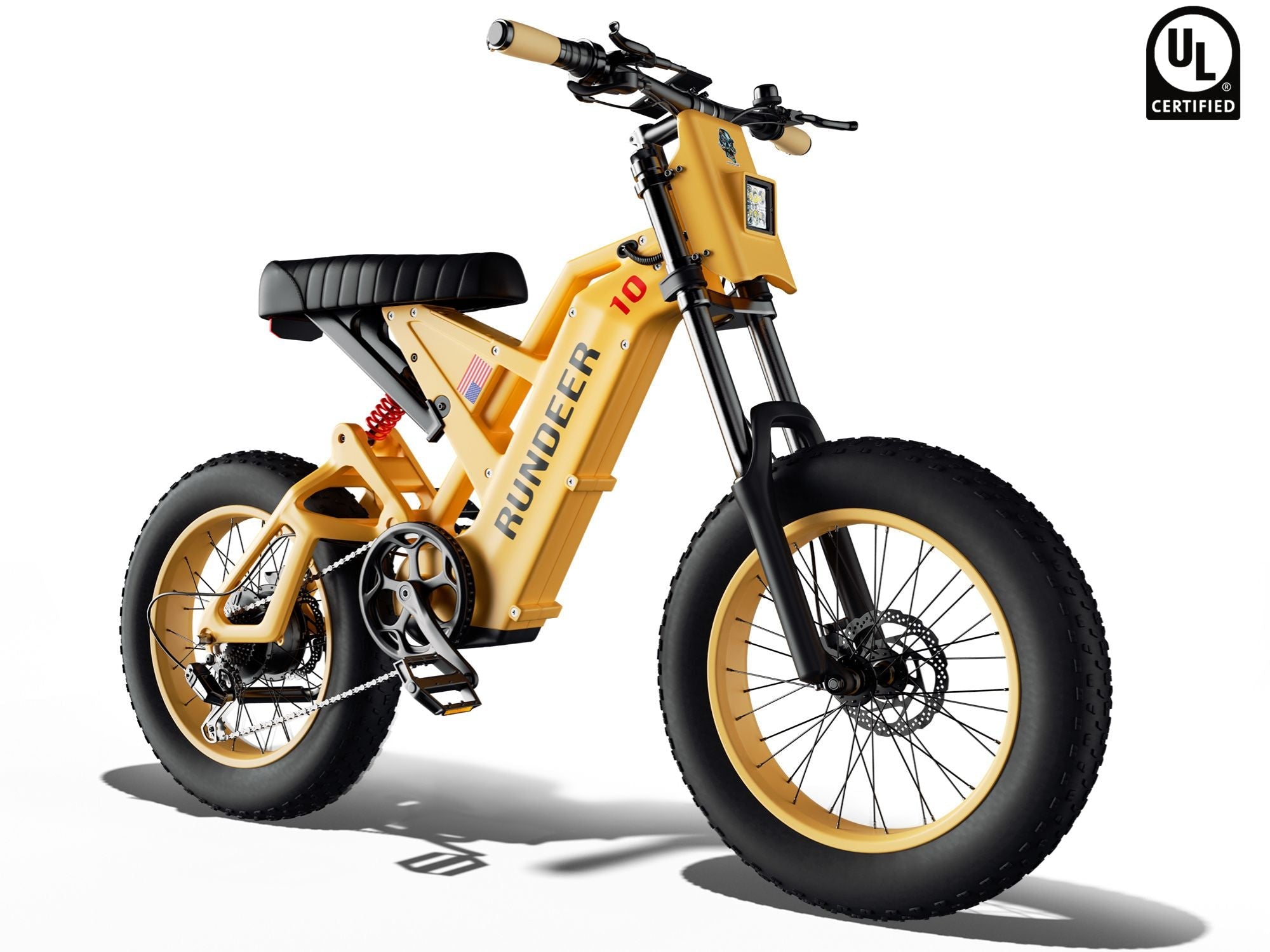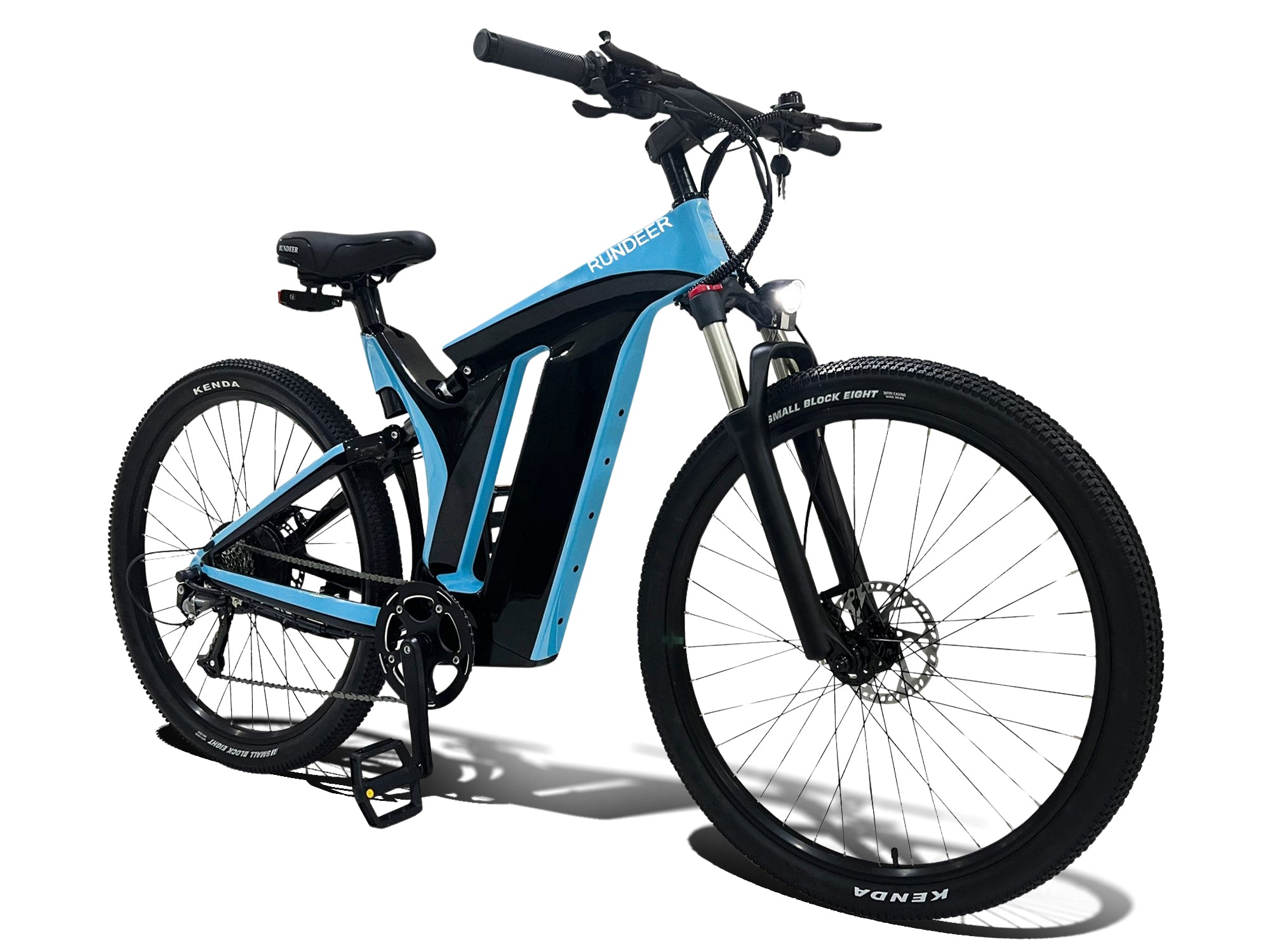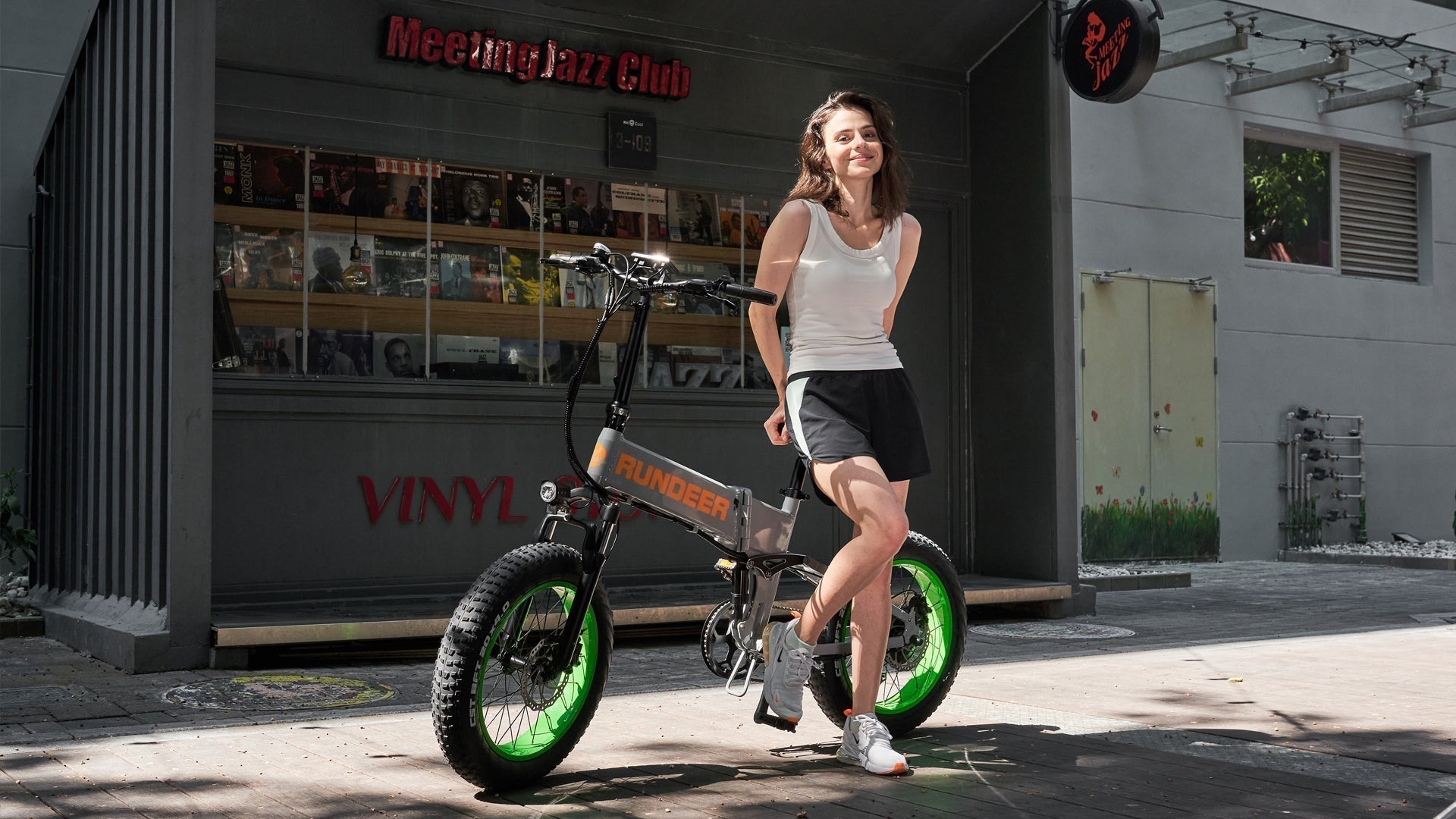Electric commuter bikes are slowly changing the look of cities as more and more people ride them. This sudden rise in popularity isn't just a passing fad; it's a big change in how people in cities move around and live their lives. Electric bikes bridge the gap between traditional riding and powered transportation by providing an easy-to-use, cost-effective option that solves several problems in cities at the same time.
How Riding Your Electric Bike in the City Helps the Environment
Cut Down on Greenhouse Gas Emissions
Electric transportation bikes are good for the earth because they leave behind very little carbon. Unlike cars and motorbikes, which directly release greenhouse gases, electric bikes don't have any pollution from their tailpipes.
In most wealthy countries, nearly 30% of greenhouse gas emissions come from transportation, with personal cars being the main source. Electric bikes are a good option for trips that are less than 10 miles, which is about 60% of all trips in cities.
Improve Air Quality
Beyond carbon emissions, motor vehicles release numerous pollutants that degrade urban air quality and harm public health. These include:
- Nitrogen oxides (NOx)
- Particulate matter (PM2.5 and PM10)
- Volatile organic compounds (VOCs)
- Carbon monoxide (CO)
Promote Sustainable Development
In a number of ways, electric bikes help make urban growth more sustainable:
- They take up a lot less room than cars, both on the road and in parking lots.
- They don't hurt the road surfaces much, which lowers the cost of upkeep.
- They help transit-oriented growth by taking care of the "last mile" issue
Electric bikes help make towns better places to live by making better use of room and focusing on people instead of cars.
Cut Down on Traffic Jams
Every year, traffic in cities costs billions of dollars in lost work time, spent fuel, and extra stress. Electric commuter bikes are a good way to get around traffic jams because they take up less space and can use bike paths. During rush hours, riding is often faster than driving in places with a lot of people. A single car lane can hold about 1,000 to 2,000 cars per hour, but the same room turned into a bike lane can hold 7,500 bicycles, which is a huge increase in the efficiency of the thoroughfare.
Reduce Energy Consumption
From a lifecycle perspective, electric bikes are remarkably energy-efficient:
| Transportation Mode | Energy Use (kWh per passenger-mile) |
| Car (single occupant) | 1.1-2.5 |
| Bus (average occupancy) | 0.3-0.7 |
| Electric bike | 0.02-0.06 |
This efficiency extends to manufacturing as well, with electric bikes requiring approximately 5% of the materials and energy needed to produce a car.

Electric Bikes Save Cost and Are Good for Your Health
Cost Savings
Electric commuter bikes offer notable economic advantages over other transportation modes:
Initial Purchase Costs: Electric bikes generally cost significantly less than new cars, making them accessible to more people.
Operational Expenses: Maintaining an electric bike is relatively inexpensive compared to the higher costs associated with car maintenance.
Reduced Transportation Costs
The financial benefits of using electric bikes for commuting can be substantial:
- No Fuel Costs: Charging an electric bike battery incurs minimal expense compared to fueling a vehicle.
- No Parking Fees: Commuters can avoid costly parking fees typically associated with car ownership.
- No Insurance Requirements: While insurance for electric bikes is optional and often lower-priced, car insurance tends to be mandatory and more expensive.
- Reduced Maintenance: Electric bikes have simpler systems that require less frequent and less costly maintenance than cars.
Overall, regular commuters find they can recover their initial investment in an electric bike relatively quickly through these accumulated savings.
Physical Health Benefits
Regular electric bike commuting offers numerous physical health advantages:
- Cardiovascular improvement: Even with electric assistance, riders typically maintain heart rates in the moderate exercise zone (65-75% of maximum)
- Weight management: Studies show regular e-bike commuters burn 300-500 calories daily during their commutes
- Muscle strengthening: Particularly in the legs, core, and lower back
- Joint-friendly exercise: Lower impact than running, making it accessible to more people
Research published in the Journal of Transport & Health found that electric bike commuters received 94% of the physical benefits experienced by conventional cyclists despite using electric assistance.
Mental Health Benefits
The psychological benefits of electric bike commuting are equally compelling:
- Decreased stress levels and anxiety
- Improved mood through regular exercise and exposure to outdoor environments
- Enhanced cognitive function and productivity
- Greater sense of autonomy and control compared to public transit or congested driving
The combination of gentle exercise, environmental engagement, and avoiding traffic frustrations creates a powerful mental wellness package.
Electric Bikes Can Help You Slow Down and Enjoy City Life
Advocate Slow Living in Fast-Paced Cities
Electric commuter bikes naturally align with the "slow movement"—a cultural shift emphasizing quality experiences over constant acceleration. By choosing a bicycle over faster transportation modes, commuters make a statement about valuing the journey itself.
This approach counters the intensifying pace of modern urban life, offering a daily practice of mindfulness and environmental awareness. Electric assistance provides just enough support to make this lifestyle accessible without sacrificing the fundamental bicycle experience.
Reduce Stress
The relationship between cycling and stress reduction is well-documented:
- Rhythmic pedaling stimulates the production of endorphins and reduces cortisol levels
- Engagement with surroundings prevents rumination and worry
- Physical activity helps process and release accumulated tension
- Direct contact with natural elements (even in urban environments) provides restorative benefits
Electric assistance removes potential stress points like difficult hills or arriving sweaty at destinations, making the experience consistently pleasant.
Enjoy Life
Electric bike commuting transforms utilitarian travel into an enjoyable experience:
- Opportunity to notice seasonal changes and neighborhood developments
- Increased interactions with community members compared to car travel
- Discovery of local businesses and services off main thoroughfares
- Flexibility to take scenic detours without significant time penalties
Many committed e-bike commuters report that their daily rides become cherished parts of their routine rather than necessary evils.
Improve Quality of Life
The cumulative effect of these changes creates substantial quality of life improvements. Survey data consistently shows electric bike commuters reporting higher life satisfaction scores compared to those using cars or public transportation for similar journeys.

Cities Are Adapting Infrastructure for E-Bikes
Electric Bike Adoption and Infrastructure Adaptation
Cities worldwide are responding to increased electric bike adoption with infrastructure improvements:
- Protected bike lanes separate from both pedestrian and vehicle traffic
- Bike highways connecting suburban areas to city centers
- Secure parking facilities with charging capabilities
- Bike-specific traffic signals to improve flow and safety
- Integration with public transit through bike carriers on buses and trains
These adaptations create network effects—each improvement increases ridership, which justifies further infrastructure investment.
Policy Support
Progressive city laws are making it easier for people to buy electric bikes by:
- Tax breaks for buying electric bikes (up to $1,500 in some places)
- Programs where employers pay for bikes or repay employees for mileage
- New projects must have safe bike parking because of zoning rules
- Zones in city areas where cars aren't allowed and only people on foot or bikes can go there
- Adding bike-friendly facilities to transportation master plans
These rules show that riding is seen as a way to solve several problems in cities at the same time.
Infrastructure Challenges and Solutions
Despite growth, there are still big problems to solve:
- Remodeling current streets where room is limited
- Preparing for winter in places with changing seasons
- Making sure that people of all income levels can get to public transportation easily
- Taking care of disagreements between road users
Some creative solutions are heated bike lanes in northern areas, protected lane systems that are modular and can be set up quickly, and traffic control systems that give priority to bicycles during rush hours.
Time to Experience Electric Biking for Yourself!
Electric commuter bikes represent far more than a transportation alternative—they embody a reimagining of urban life prioritizing health, sustainability, and quality experiences.The expanding infrastructure and supportive policies suggest this transformation will continue accelerating. For individuals considering their transportation options, electric commuter bikes offer a compelling combination of practical benefits and life-enhancing experiences that few alternatives can match.








